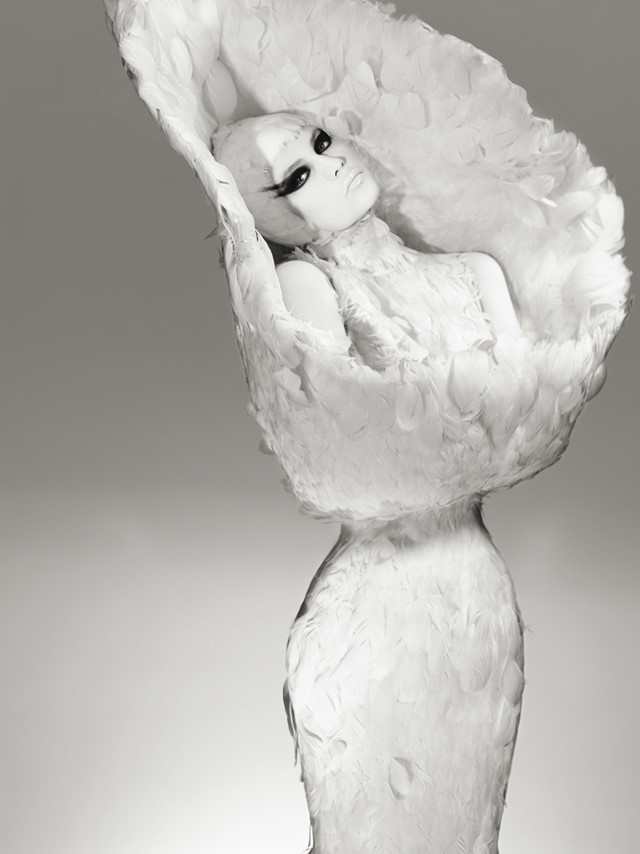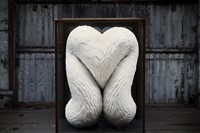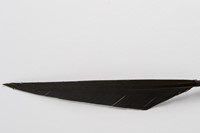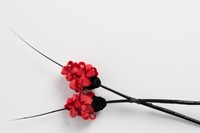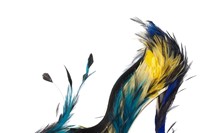The Fashion Museum in Antwerp's latest show is an ode to the contemporary and historic panoply of plumes and feathers in fashion
Out of fashion’s repertoire of motifs, bird plumage – just like colourful florals – speaks to the imagination of fashion designers in widely different ways. “Feathers are often associated with movie stars and glamour”, begins Karen Van Godtsenhoven, curator of the MoMu, ahead of the opening of her exhibition Birds of Paradise. “Historically, this connotation starts with court dress. At the English court, for example, a person’s rank was made apparent by the amount of feathers, often exotic, on their hat. So, it was also related to exclusivity and luxury. Another connotation was feminine elegance, because of the motility and lightness of feathers. The woman as a bird – free and innocent – is a stereotypical idealisation, but on the other hand we also see birds in the Moulin Rouge and French can-can, as symbols of eroticism. In the case of Ann Demeulemeester, the feather stands for freedom and individuality. It’s interesting how feathers are used as tokens of different qualities.”
Their versatility and the variety of techniques in which feathers are used was one of the main reasons why Van Godtsenhoven decided to dedicate an exhibition to the subject. “You can do anything with them”, she continues. “At first real plumage was used. Even until the Eighties we see valuable feathers from exotic birds in couture. But today techniques have evolved so much that it’s possible to process roosters’ and chickens’ feathers so they look like those of a bird of paradise.”
Personally, Van Godtsenhoven is most drawn to Ann Demeulemeester and Alexander McQueen, designers who used feathers in a poetic and dramatic sense. “Alexander McQueen’s last collection, ‘The Horn of Plenty’, was very graphic, which was a big difference with Sarah Burton’s later collections. Burton continues Alexander’s use of feathers, but in a softer and more lavish way. Both designers’ work is very McQueen, but their personalities shine through.”
"At the English court, a person’s rank was made apparent by the amount of feathers, often exotic, on their hat" — Karen Van Godtsenhoven
Due to the tendency of feathers to gather dust, the installations and silhouettes are showcased in glass conservatories. “We had to protect the pieces, but the effect is quite beautiful. Everything is transparent and feels very light. Light as a feather, in fact.”
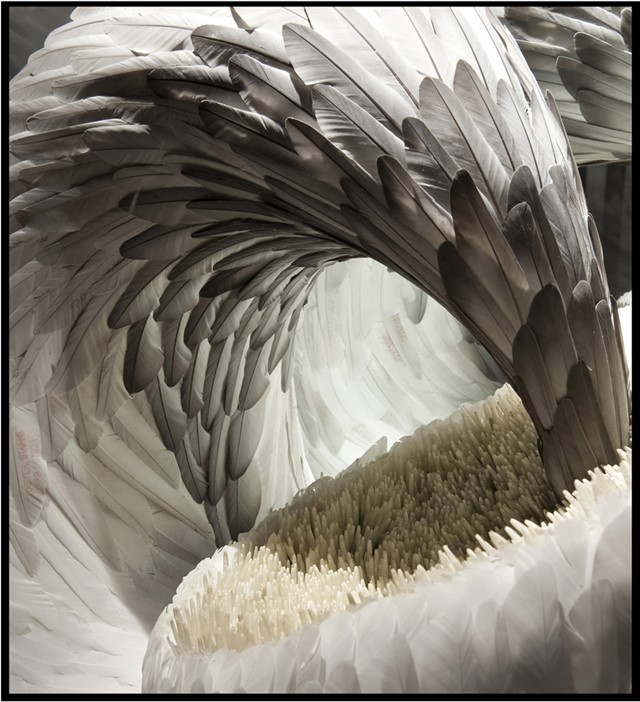
Among the pieces on show is a striking coat from Marlène Dietrich – “made entirely out of swan down but looks like real ermine”. Plenty of fashion photography lines the walls and there’s room filled with taxidermy birds from the Antwerp’s Zoo’s collection. Projected is a film by Sølve Sundsbø for Showstudio, titled ‘Perroquet’. It features a brightly coloured parrot, its flight filmed in slow motion. There’s also a room dedicated to Ann Demeulemeester. In light of the Belgian designers’ recent departure from the house that bears her name, this feels especially poignant to Van Godtsenhoven. “In contrast to most luxury houses, Ann only works with feathers that are found or that are industrial waste. She favours dove feathers, which most would consider the least valuable of all. But for Ann, the dove represents freedom and simplicity. There’s a poetry to that which I love.”
The otherworldly objects interspersed between these glass cages are courtesy of British artist Kate McGuire. “It was a very pleasant collaboration. For Birds of Paradise, she adapted existing works to the exhibition space. Kate’s a real craftswoman, meticulously placing each feather – an undertaking that takes immense patience. The organic shapes she creates are reminiscient of bodies, which some people find it a bit unnerving. Her work is not charming in a pretty way, but it is very fascinating and adds an extra touch of drama to the exhibition.”
Birds of Paradise is at the Fashion Museum of Antwerp until August 28.
